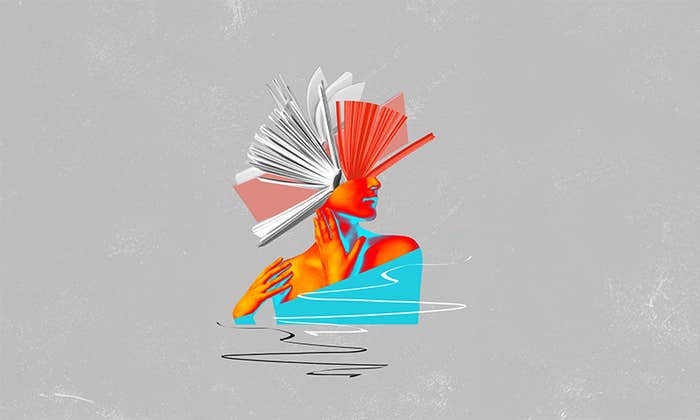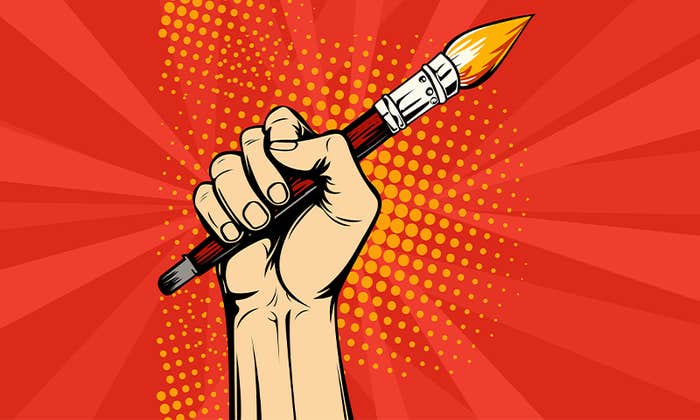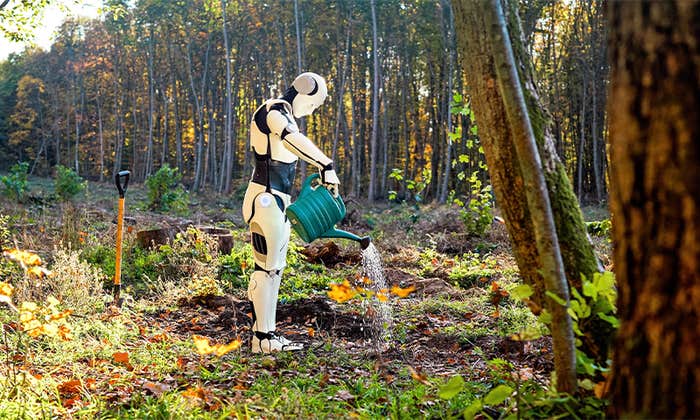For the past five years, Nautilus has asked scientists what they would be if they weren’t a scientist. I can now report what, above all, they want to be. “Film director,” says physicist David Deutsch. “A filmmaker,” says neuroscientist Antonio Damasio. “I would make movies,” says astronomer Lisa Kaltenegger.
It’s easy to see why. Movies were often the first experiences that sparked scientists’ curiosity about the world. “I was so into cinema when I was younger,” says astrophysicist Daniel Wolf Savin. “I would see 80 to 100 movies a year.” Confronting mysteries in a fantasy world became a romantic quest to solve them in the real one.
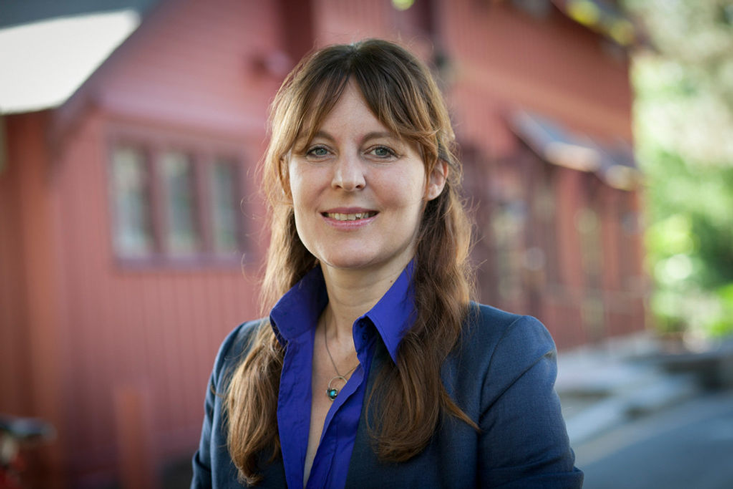
We include the question, “What would be you be if you weren’t a scientist,” in our regular “Ingenious” interviews to give readers a glimpse into scientists’ inner lives. Who is this person who spends day after day, year after year, unraveling genes related to breast cancer, the illusory flow of time, the sex lives of gorillas? What do they dream about? The answers have revealed a wonderful range of individual quirks and passions. “What would I be I weren’t a scientist?” asks primatologist Robert Sapolsky with a grin. “Well, obviously, I’d be a gorilla.”
Judging the responses on a curve, tossing out the extremes, like being a gorilla, filmmaker marks the apex, rounded out by artists of other kinds: musician, painter, novelist, poet. Kirk Johnson, a paleontologist and illustrator, and director of the Smithsonian National Museum of Natural History, sounds a theme that appears as regularly as a Beethoven motif in the interviews. Rather than being separate pursuits, art and science spring from the same desire to peel back the surface and reveal the world anew.
“Both science and art are creativity and imagination and execution,” Johnson says. “You come up with new ideas and you test those ideas and you execute them. So I find that the creative people of the world come in many flavors. People always talk about science and art as being very different things, and I find them to be very similar things.”
In his interview with us, molecular biologist Peter Gruss, former president of the Max Planck Society, a science research organization, stresses that science and art don’t occupy separate cultures, they never have. The gap that many see is a mirage. “There was a time when people were talking about two cultures. I don’t believe it for a minute,” Gruss says. “Both fields have one general principle: to reflect how we see the world, artists with their creativity, scientists with their measurements and logical building blocks. Both are required for society to function.”
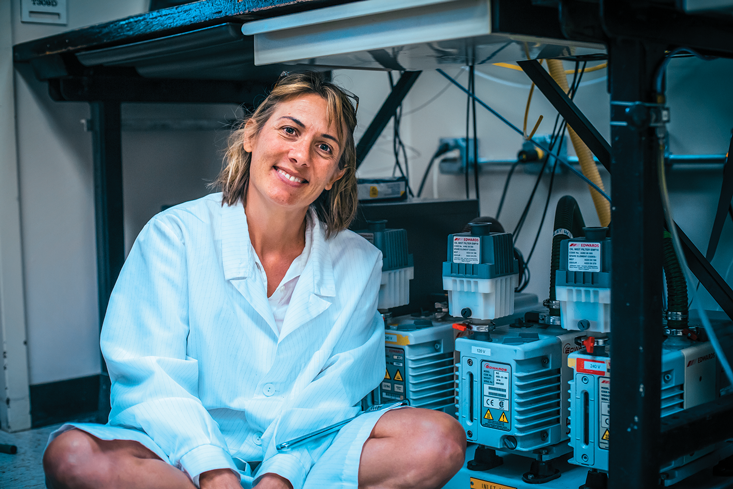
The connection between science and art runs deeper, offers Hope Jahren, a geochemist and geobiologist, and author of Lab Girl, a memoir of coming of age in science. Science, like art, can change you forever. “Personally I think that’s the true purpose of science. It’s not to build bridges or make new combat-lack-of-erection medicines. It’s to feed the soul in the same way that art does.”
How science and art got sent to their separate rooms follows a tricky cultural path. Socrates, Plato tells us, wanted to boot the poets and storytellers from the city because they dared to boast that wicked men could be happy. That was no way to mold the moral virtues of a serious republic. Yet the Renaissance turned Socrates on his head. It showed artists sculpting the foundations of society. And science ran in artists’ blood.
In his recent biography of Leonardo da Vinci, veritable embodiment of the Renaissance, Walter Isaacson writes that Da Vinci’s science, his explorations of engineering, anatomy, geology, and botany, were not separate endeavors from his art, his painting and sculpture. “Together they served his driving passion, which was nothing less than knowing everything there was to know about the world, including how we fit into it,” Isaacson writes.
The purpose of science is to feed the soul in the same way that art does.
As the Enlightenment marched on, social progress was marked by reason and logic. Art was swept into its clutches. Voltaire, for one, praised poetry as an “ornament of reason.” Art associated with ungovernable desires headed underground. As stately cities and factories rose in the Industrial Age, and locomotives sped through geometric farmlands, unruly art appeared to live across the tracks from science and technology.
Remarkably, a single event in modern times, a lecture, practically cemented the gap. On a May evening in 1959, a popular novelist named C.P. Snow, who had been a research scientist, declared, before a gathering of dons and students at the University of Cambridge, that a “gulf of mutual incomprehension” divided literary intellectuals and physical scientists. “The non-scientists have a rooted impression that the scientists are shallowly optimistic, unaware of man’s condition,” Snow said. “On the other hand, the scientists believe that the literary intellectuals are totally lacking in foresight, peculiarly unconcerned with their brother men, in a deep sense anti-intellectual, anxious to restrict both art and thought to the existential moment.”
The lecture struck a chord that has resonated for more than 50 years. In his 2018 book, Enlightenment Now, about the salvation of reason, cognitive psychologist Steven Pinker writes that “Snow’s argument seems prescient today.” The “disdain for reason, science, humanism and progress has a long pedigree in elite intellectual and artistic culture,” Pinker writes.
Yet Snow’s argument doesn’t seem prescient today. In fact, it didn’t seem prescient in 1959.
In an essay about Snow’s life and culture, published in a 50th-anniversary edition of The Two Cultures, Stefan Collini, a professor of Intellectual History and English Literature at the University of Cambridge, writes that Snow’s binary view was a simplified reflection of intellectual culture at the time. Even then, Collini points out, universities ran on trains of thought that linked the sciences and humanities. History and philosophy were fleshing out the human side of science, showing its practice was subject to distinct periods, cultures, and personalities. Physicists, meanwhile, puzzled over the difficulty of separating the human observer from the behavior of atomic particles. Reducing the myriad schools of thought in postwar intellectual life to two cultures, Collini writes, robbed Snow’s thesis of “descriptive value.”
Rather, Collini states, Snow’s great divide stemmed from his love of science and hatred of literary pretension. Growing up in industrial England in the 1930s, Snow “saw science as the great hope in a world driven into the economic depression and another world war by traditional elites,” Collini writes. Snow loved the writer H.G. Wells, and was turned off by critics who disdained the author of The War of the Worlds. The “young Snow developed an antipathy to ‘literary intellectuals,’ especially to what he identified as their snobbish and nostalgic social attitudes, which was never to leave him,” Collini writes.
Whatever psychological gremlin gave birth to Snow’s split vision of science and the humanities, the novelist and scientist himself preached to unite them. He lectured and wrote on how better education, in both schools and social institutions, could close the gap between increasingly specialized academic fields and an expanding valley between rich and poor people. His goals were noble if his premise of two cultures was false.
When the literary historian and biographer Richard Holmes stopped by Nautilus to discuss his two recent books, The Age of Wonder, about science in the Romantic era, and Falling Upwards, about the history and science of ballooning, he lamented that Snow’s two cultures have “hung over us for so long.” One of the reasons Holmes wrote The Age of Wonder and Falling Upwards, he says, was to step back in history to correct the “modern notion of two cultures, that arts and humanities can’t speak to scientists, and vice versa.” Art and science can speak the same language, Holmes says, “and the Romantic period is a wonderful example of why.”
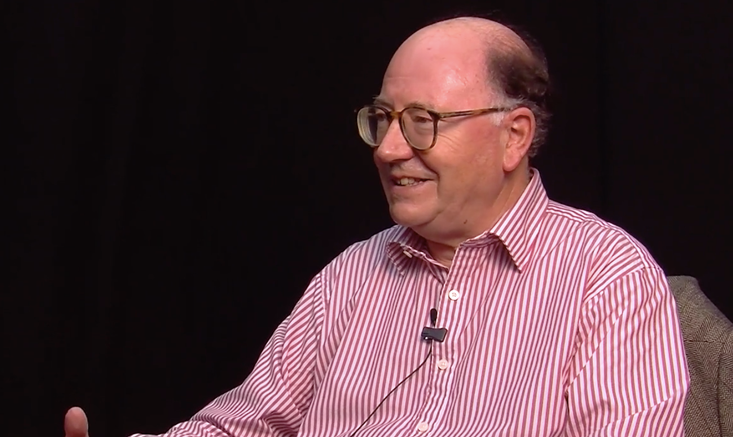
Contrary to the portrait of Romantic poets striking a blow against the empire of reason—“We murder to dissect,” Wordsworth lamented—poets and writers, including Keats, Byron, and the Shelleys—Percy Blythe and Mary—were tremendous fans of science, incorporating the latest theories in astronomy, evolution, and physics into their poems and novels. Likewise, 19th-century astronomer William Herschel, chemist Humphry Davy, and Michael Faraday, whose discoveries in electromagnetism revolutionized physics and modern society—he created the first electric motor—knew the poets and musicians of the time, “and were fascinated and inspired by them,” Holmes says.
Davy, who first isolated sodium and potassium, and was a pioneer in electrochemistry, learned a great deal from his friend Coleridge, the dark heart of Romanticism, and author of “The Rime of the Ancient Mariner.” “They had a very interesting exchange on the idea of pain,” Holmes says. “What is the function of pain, particularly in animal life? What is it doing? Why was it put there? They would frame it in terms of why did God put pain into this system? It was a kind of metaphysical discussion, but it bears on Davy’s actual experiments. One of the things Davy found is that nitrous oxide suspended pain. He writes a paper suggesting its use as anesthesia, and tragically it’s not taken up for 40 years. So this is the scientist talking to the artist, and the artist saying back to him, ‘Think of this in larger terms, direct your science this way.’ ”
C.P. Snow developed an antipathy to literary intellectuals that was never to leave him.
The impact of art on science was a theme that film editor Walter Murch sounded repeatedly in his interview with Nautilus. Murch is a Renaissance man himself. The legendary film editor of Apocalypse Now and The English Patient has read more deeply in science, and the history of science, than practically any artist I’ve met. Murch excitedly told us about a diagram created by 20th-century Hungarian physicist Karoly Simonyi. The chart correlates developments, or pulses, in art and science from ancient times to the present.
“What’s fascinating about that diagram is the art pulse always precedes the science pulse,” Murch says. “Breakthroughs in art break up the hardpan of the soil and fertilize it, add compost to the mix, and then the fruit of science, the plant of science, can find its roots.” For instance, Murch says, the turn of the 20th century “brought the development of motion pictures, which is basically the quantization of movement, breaking movement down into discrete frame movements. Then about 10 years later, along comes Max Planck and gives us the theory of the quantum. That’s around the same time that films began to be edited and put together to tell a coherent story out of parts that are not shot in sequence. So those two things, quantum mechanics and the development of motion pictures, work together.”
Building a coherent story out of parts could describe how our brains work every second of the day. They evolved to piece together discrete sensations and perceptions into narratives, says Damasio, director of the Brain and Creativity Institute at the University of Southern California. It’s how we learn, navigate the world. And art, from cave paintings on, helped show the way. “It was a way of establishing narratives, something very human,” Damasio says. “We are constantly narrating, first in nonverbal ways, and once you have proper language, we narrate verbally. We tell stories about what we’re going to do, how we feel about other people, things that need to be remembered.” Storytelling is at the heart of science, too.
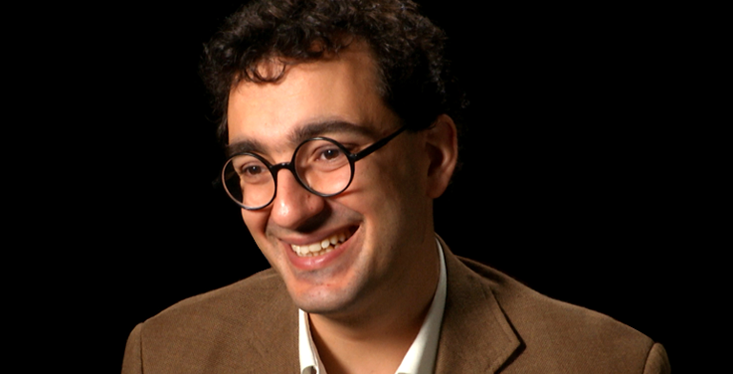
“I loved telling stories when I was a child,” says Simon DeDeo, an assistant professor at Carnegie Mellon University, where he runs the Laboratory for Social Minds, and external faculty at the Santa Fe Institute. “I loved writing stories. Over the years I’ve tried to do that. I loved writing poetry. Science tells stories. It tells stories that have a lot of mathematics in them. There’s a lot of constraints in the stories you can tell, and in some sense the more developed the science, the more the mathematics come to guide that process. But you are always telling stories, giving an account of something you’ve seen.”
For Kaltenegger, an associate professor of astronomy at Cornell University, and director of the Carl Sagan Institute, science still tells the best stories. Kaltenegger is a passionate photographer. But art will have to wait. “I think it’s pretty interesting that science can top that for me right now, because there are just so many interesting things going on that I want to know more about,” she says. “Maybe later on when we’ve found out everything we need to find out about exoplanets and other worlds, I’ll put my other hat back on and I’ll paint, take photographs, and make a movie.”
If scientists don’t retain a sense of their humanity, it’s detrimental to their work.
Consistently, scientists and artists tell Nautilus, they work in harmony rather than discord with one another and their respective cultures. In significant ways, they admit, creating art and practicing science are not the same. Science, as DeDeo says, has its constraints. It has to follow the data to reality. Unlike artists, scientists don’t get to write their own endings, regardless of how they’d like the story to go.
Caleb Scharf, director of the Columbia Astrobiology Center at Columbia University, was raised in a rural English village. Both of his parents were art historians. They taught him how art sparks and expands our humanity. “They instilled in me the notion there are many different ways to explore the universe around you,” Scharf says. “There are the ways they used—studying human interaction with the arts—but they also taught me science was a way to explore the universe. So I got a lot of my fascination for science from these humanities parents!”
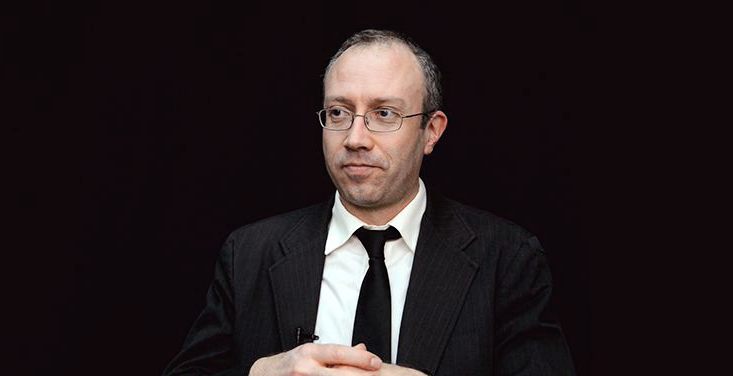
Now long into his career in astrobiology and exoplanetary science, and popular science writing—his latest book is The Zoomable Universe—Scharf says a connection with the arts and humanities ultimately makes better science.
“I feel that as a scientist, one of the worst things you could do is to forget your humanity, forget the elements of being human that have nothing to do with being analytic or able to invent things,” Scharf says. “If scientists don’t retain a sense of humanity, a sense of connection to being human, it’s detrimental to their work. We’re all blinkered. We’re all inevitably biased by so many things in our culture and own personal makeup. Even the most hard-nosed, analytic scientist is not immune to that. It will skew the way they look at nature, it will skew the way they explore problems. My principle in science is an open mind. Always question and never shut off any avenue. For that reason, it’s important for scientists to retain a good connection to humanity.”
Kevin Berger is Nautilus’ features editor.
Lead Art Credit: Timmery/Shutterstock





















